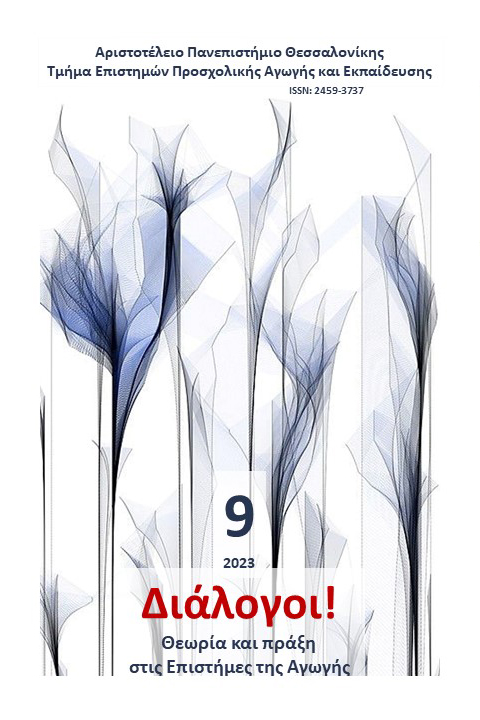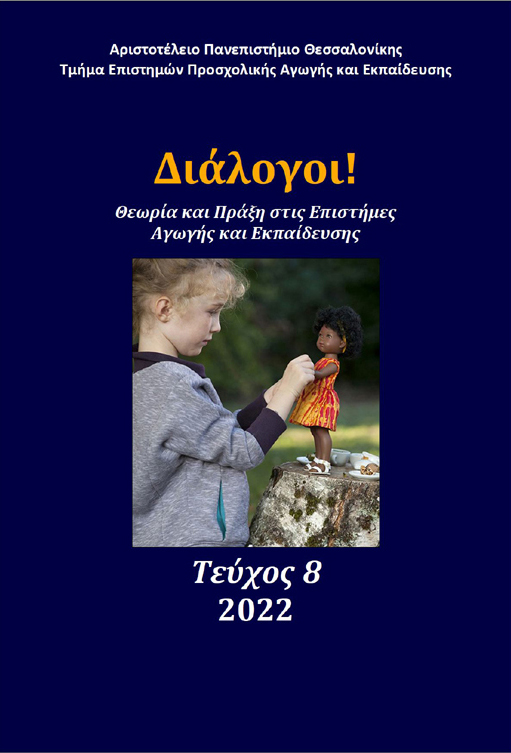Παιδική λογοτεχνία και οντολογικός επαναπροσδιορισμός του υλικού κόσμου. Ο φιλοσοφικός λόγος και η εικονοποιητική μεταφορά ως μέσα για τη διάσπαση της διχοτόμησης φύσης-πολιτισμού

Περίληψη
Στο πλαίσιο της παγκόσμιας κινητοποίησης για μια νέα, ηθική προσέγγιση του περιβάλλοντος από τον άνθρωπο, συγγραφείς για παιδιά ευαισθητοποιήθηκαν και επιχείρησαν να ενσταλάξουν στους μικρούς αναγνώστες μια μετα-ανθρωπιστική φιλοσοφία, αποστασιοποιημένη από τις οντολογικές και επιστημολογικές παραδοχές που αντιλαμβάνονται τον άνθρωπο ως τον μοναδικό διαμορφωτή του κόσμου. Βασιζόμενοι στο ότι η εικονογράφηση εξυπηρετεί αισθητικούς, εκπαιδευτικούς και πρακτικούς σκοπούς, συγγραφείς για παιδιά επιλέγουν να βασιστούν στη συλλειτουργία του κειμενικού κώδικα με τον εικονιστικό και στη χρήση εικονοποιητικών μεταφορών, προκειμένου να μυήσουν τους αναγνώστες τους στην έκφραση της Περιβαλλοντικής Ηθικής μέσα από την εκτίμηση της Φύσης. Για τις ανάγκες του παρόντος άρθρου επιλέχθηκε ένα εικονοβιβλίο για παιδιά και ένα εικονογραφημένο παιδικό βιβλίο γνώσεων βραχείας φόρμας, που, μέσα από το μοτίβο του «ριζώματος», υποδεικνύουν στο κοινό τη σχέση των ανθρώπινων σωμάτων με τον μη-ανθρώπινο κόσμο και την εγγενή αξία των γονιδίων όλων των όντων. Σκοπός του άρθρου είναι να συγκρίνει ποιο από τα δυο είδη κατορθώνει να μεταλαμπαδεύσει περισσότερο εύληπτα στα παιδιά σύνθετες έννοιες που αφορούν στην Ύπαρξη και το οικοσύστημα, βοηθώντας τα να προβούν σε συνδέσεις του Εαυτού και της Φύσης. Θα ερευνηθεί η σχέση-κειμένου εικόνας στα επιλεγμένα έργα, το ιδεολογικό υπόβαθρο των συγγραφέων και των εικονογράφων, αν έλαβαν υπόψη το γνωστικό φορτίο και την εμπειρία των αναγνωστών τους και θα αναζητηθούν οι μεταφορές του φιλοσοφικού λόγου που δημιουργούν συνθήκες οπτικής ανάγνωσης και ευνοούν τη σύλληψη βαθύτερων νοημάτων.
Λεπτομέρειες άρθρου
- Πώς να δημιουργήσετε Αναφορές
-
Αγγελάκη Ρ.-Τ. (2023). Παιδική λογοτεχνία και οντολογικός επαναπροσδιορισμός του υλικού κόσμου. Ο φιλοσοφικός λόγος και η εικονοποιητική μεταφορά ως μέσα για τη διάσπαση της διχοτόμησης φύσης-πολιτισμού. Διάλογοι! Θεωρία και πράξη στις επιστήμες αγωγής και εκπαίδευσης, 9, 161–180. https://doi.org/10.12681/dial.35588
- Τεύχος
- Τόμ. 9 (2023)
- Ενότητα
- Επιστημονική Αρθογραφία

Αυτή η εργασία είναι αδειοδοτημένη υπό το CC Αναφορά Δημιουργού – Μη Εμπορική Χρήση – Παρόμοια Διανομή 4.0.
Οι συγγραφείς των άρθρων που δημοσιεύονται στο Διάλογοι! Θεωρία και Πράξη στις Επιστήμες Αγωγής και Εκπαίδευσης διατηρούν τα δικαιώματα πνευματικής ιδιοκτησίας επί των άρθρων τους, δίνοντας στο περιοδικό το δικαίωμα της πρώτης δημοσίευσης. Άρθρα που δημοσιεύονται στο Διάλογοι! Θεωρία και Πράξη στις Επιστήμες της Αγωγής και Εκπαίδευσης διατίθενται με άδεια Creative Commons 4.0 και σύμφωνα με την άδεια μπορούν να χρησιμοποιούνται ελεύθερα, με αναφορά στον/στη συγγραφέα και στην πρώτη δημοσίευση για μη κερδοσκοπικούς σκοπούς και με δικαίωμα τροποποίησης μόνον με παρόμοια διανομή (αν αναμείξετε, τροποποιήσετε, ή δημιουργήσετε πάνω στο υλικό, πρέπει να διανείμετε τις δικές σας συνεισφορές υπό την ίδια άδεια όπως και το πρωτότυπο).
To Τμήμα Επιστημών Προσχολικής Αγωγής και Εκπαίδευσης του Αριστοτέλειου Πανεπιστημίου Θεσσαλονίκης και το Εθνικό Κέντρο Τεκμηρίωσης διατηρούν το δικαίωμα να δημοσιεύουν, να αναπαραγάγουν, να παρουσιάζουν στο κοινό, να διανέμουν και να χρησιμοποιούν άρθρα που δημοσιεύονται στο Διάλογοι! Θεωρία και Πράξη στις Επιστήμες Αγωγής και Εκπαίδευσης σε οποιοδήποτε μέσο και μορφή είτε μεμονωμένα είτε ως μέρη συλλογικών έργων, για όλο το χρόνο διάρκειας προστασίας της πνευματικής ιδιοκτησίας και για όλες τις χώρες του κόσμου.
Αυτό περιλαμβάνει ενδεικτικά, και όχι αποκλειστικά, το δικαίωμα δημοσίευσης των άρθρων σε τεύχη του περιοδικού Διάλογοι! Θεωρία και Πράξη στις Επιστήμες Αγωγής και Εκπαίδευσης, αναπαραγωγής και διανομής μεμονωμένων αντιγράφων των άρθρων, αναπαραγωγής ολόκληρων των άρθρων σε άλλη έκδοση του Τμήματος Επιστημών Προσχολικής Αγωγής και Εκπαίδευσης του Αριστοτέλειου Πανεπιστημίου Θεσσαλονίκης και του Εθνικού Κέντρου Τεκμηρίωσης και αναπαραγωγής και διανομής των άρθρων ή περίληψης αυτών με χρήση πληροφορικού συστήματος αποθετηρίου.



